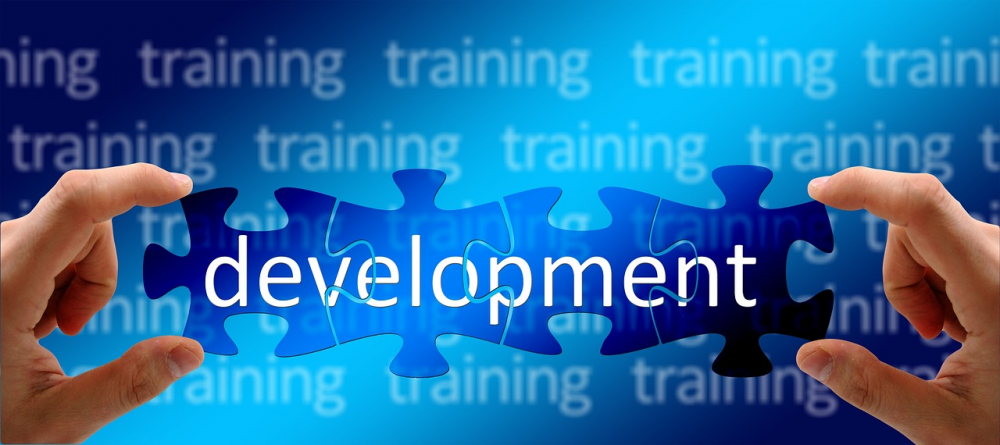
Human resource management leverages employees to gain a competitive advantage and meet organizational goals. It involves many processes, e.g., employee recruitment, training, motivation, and performance evaluation to meet company goals.
Unhappy employees cost about half a trillion dollars annually in the US. Employee performance regulation and compensation can help improve employee morale and productivity. It will save you in the long run too. In the opinion of Thomas Pyle, a well-known Kansas worker’s compensation attorney, “Unhappy employees can take companies down. Not only does it affect morale and productivity, but it also comes with a high price tag.
Implementing effective employee performance regulation and fair compensation not only increases morale and productivity, but also saves you money in the long run. Investing in the well-being of your employees is not only a moral imperative, but a smart business decision,
But, creating an optimum workplace environment for maximum work performance can be challenging. Yet, it is achievable through good practices.
Let’s discuss steps you can follow to leverage your HR for better performance and compensation.
1. Define and Align Your HR and Organization’s Goals
Without clarity, your employees will underscore their performance targets and company goals. Any mixed signals sent to your employees can derail your business operations as an employer. Hence, the organizational goals should be clear, and employees informed explicitly about them.
Having clear communication can help avoid issuing mixed signals. But, the most important thing is to set goals and objectives. Let each department or unit know their objectives and ways they influence the company’s goals.
Aside from that, let them have charts with clear goals in the office. It’s also important to adopt other ways of communicating the goals, e.g., emails. It helps you repeat the message and let it sink into each employee.
2. Use Performance Management Software to Improve Efficiency
Performance appraisal lets your company know whether an employee is an asset or a liability. It will uncover employees’ strengths that should be appreciated. It will also identify employee weaknesses that need to be addressed.
Unfortunately, most employees hardly like performance appraisal. With such an attitude, you’ll get poor employee engagement. It can even be worse if you’re stuck in complex paper-based or spreadsheets. Connecting the best performance with appropriate rewards will be hectic.
Using performance management software can come in handy. It streamlines your performance appraisal process. Also, it improves employee engagement and supports continuous performance tracking.
It keeps everyone on the same page and aligns them with the organization’s goals. Performance management software has robust feedback handling and integration with other solutions. So, it will streamline your employee performance evaluation process.
3. Streamline Your Compensation Process Using Compensation Software
One of improving employee performance is through appropriate compensation. Compensation processes involve offering bonuses, merit, equity shares, etc.
Some top performers may be entitled to paid vacations with a destination of choice. At the same time, others may be entitled to the company’s shares based on the company’s policy.
Controlling and calculating compensation and benefits can be tedious on spreadsheets. Compensation management software simplifies your benefits calculations and streamlines the compensation process.
You should check if the compensation strategy has an effective ROI on your business.
Embrace modern compensation tools to solve complex compensation benefits plans and processes. Besides, it helps you manage the whole of the compensation cycle. Modern technology can help you achieve ROI in your compensation strategy.
4. Use Transparent Reward System to Improve Employee Satisfaction and Retention

However great your reward plans are, it will lead to employee resentment and conflict if it isn’t just or open.
A transparent rewards system directly impacts employees. They can comprehend their wage rate and the working principle of a reward system. It also minimizes the likelihood of equal pay claims being filed against a company by reducing uncertainty and feelings of unfairness.
Rewards are significant in many ways:
- Drives efforts and job performance
- Encourages employee commitment
- Reinforce job satisfaction
- Reduces employee absenteeism and exits.
Hence, a transparent reward system will help achieve these benefits minus the unnecessary workplace conflicts. So, apart from streamlining your compensation plans, make them transparent and equal to everyone.
5. Provide Prompt Performance Feedback
Tracking and monitoring employee progress are only effective if you provide performance feedback. The earlier the feedback is submitted, the easier and faster employees can learn and improve themselves.
So, good performance feedback will reinstate good behaviors and improve employee skillsets. You do not need to give your input in the next annual performance review. Prompt feedback helps shape work culture and assure your employees of their performance.
Performance management software can help you run feedback collection. Alternatively, you can use free feedback collection tools like survey monkey or standard email.
6. Embrace Peer Reviews to Improve Performance
Using peer reviews can also support in-depth performance management. It involves using coworkers’ evaluations, including positive efforts and aspects that need improvement. The feature exists in most performance management software.
The good thing about workplace peer reviews is encouraging collaborative effort to improve each employee. It builds better communication between employees and makes them learn from others for improvement.
It is vital to have management monitoring the norm. It helps ensure that claims, praises, and comments are acknowledged and acted on. So, using peer reviews can significantly improve your performance process.
7. Use Preemptive Management Strategy to Avoid Performance Pitfalls
A preemptive management strategy can also drive HR and overall organizational performance. It is a subtle way of avoiding performance pitfalls before you face them. In simple terms, it means removing the guesswork in the workplace by making clear employee mandates.
Here’s how you go about preemptive management:
- Setting goals and employee expectations.
- Offer an incentive to show appreciation to employees. It will show that you notice their efforts and wish them to continue with the excellent work.
- Highlighting the consequences of not abiding by rules and policies.
Hence, preemptive management emphasizes three things:
- Company goals and employees’ objectives alongside alignment of the two.
- Ways of meeting the set goals and objectives.
- Policies and rules should not be contravened.
Therefore, preemptive management helps drive performance but is always on the lookout for any possible risk that may undermine the process.
8. Offer Staff Training and Development

Prompt feedback and peer reviews are not enough to create impactful improvement amongst your employees. Top performers will be encouraged to continue doing so through rewards. But, underperformers can benefit from training and development.
After uncovering employees’ strengths and weaknesses in performance appraisals, train them to address the shortcomings. Training and development go beyond improving a company’s productivity. It also helps:
- Attract and retain the best talent
- Improve morale and employee satisfaction
- Increase profit earned.
- Reduces employee absenteeism by over 41%
- Improves productivity by over 15%
Conclusion
We can emphasize how critical compensation and performance are to your company’s productivity. It will directly determine if you’ll meet your organization’s goals or not.
The first step towards elevating your compensation and performance management is defining your goals. Next, streamline compensation processes like complex benefits plans, etc.
A reward system will help encourage your employees while training and development improve their skillset. The reward system should be transparent to minimize workplace conflicts and foster a better working environment.
An integrated HR software can handle all these with compensation and performance management features. Leverage HR compensation tools to drive efficiency, management, and productivity.







